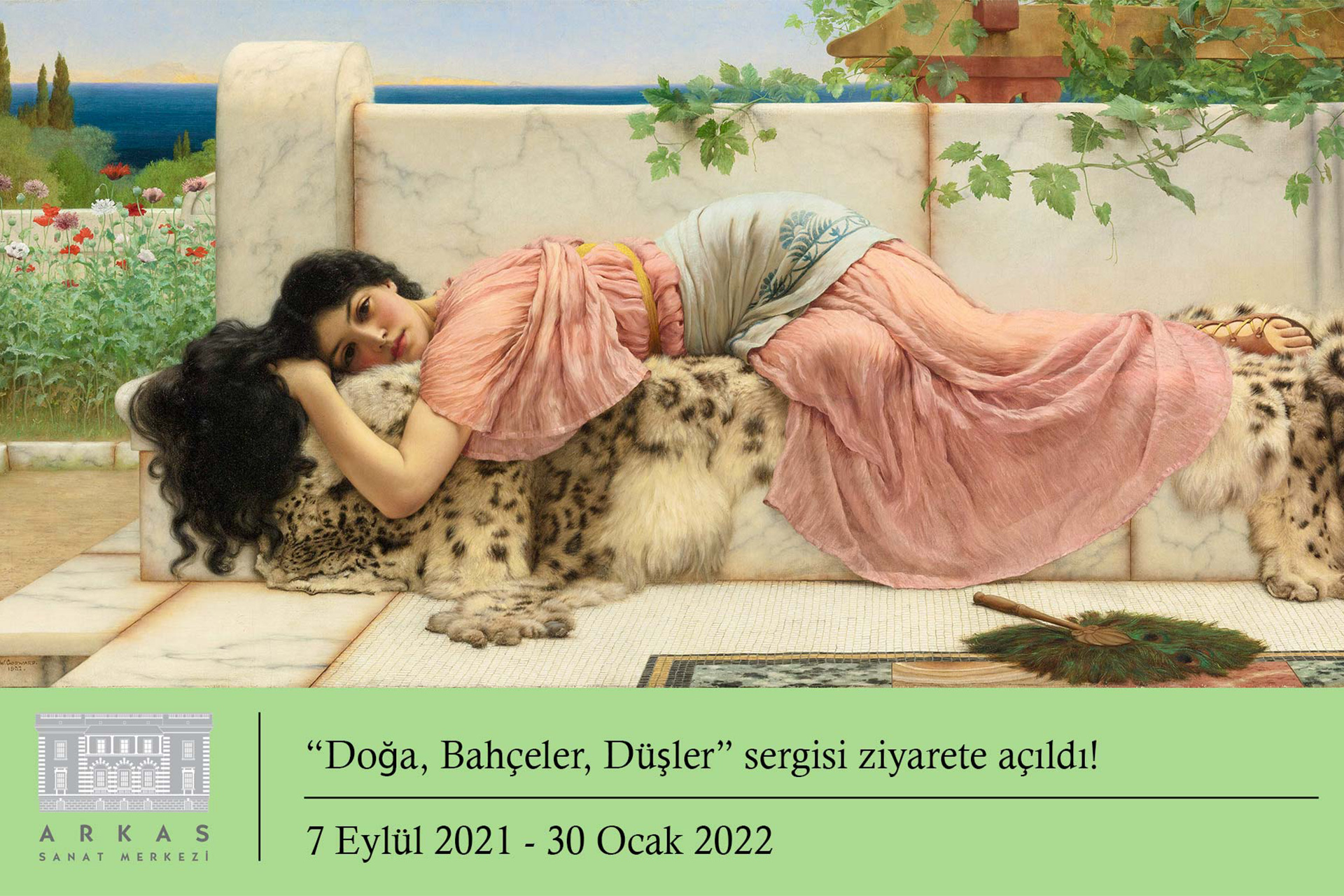Humans keep interacting with nature and survive thanks to this harmony. Created with the works from the Arkas Collection, the exhibition, “Nature, Gardens, Fantasies” rekindles the concept of unity between nature, gardens, and the human spirit through art.
The exhibition is held in Arkas Art Center, featuring pastoral works spanning the 16th and 20th centuries. Bringing together works created at a time when nature was not damaged by humans, “Nature, Gardens, Fantasies” aims to remind that human is a part of the nature and can survive only with it.

Nature continuously renews itself, containing living and non-living beings. Since their existence, humankind has lived in continuous interaction with nature. It is through this communication that we survive. And our self-expression efforts, as part of an attempt to give meaning to our lives by observing ourselves in nature, constitute art. Nature offers one of the biggest sources of inspiration for artistic creation for humankind throughout history in an infinite number of ways and forms.
Gardening is a nature art that is designed as a living space invented by humans as part of nature. It is accepted as a space of happiness associated with the phenomenon of heaven in many cultures. To quote Michel Foucault, “The garden is the smallest parcel of the world and then it is the totality of the world. The garden has been a sort of happy, universalizing heterotopia since the beginnings of antiquity.” The garden is admirable for the beauties and imaginative world it offers, while nurturing the spirituality and imagination of humankind. With the plants brought together, technical knowledge and experience, the garden witnesses the material existence of humans, as well.

Opened for visits on September 7 in Arkas Art Center, “Nature, Gardens, Fantasies” once again brings a focus on the relationship between art, nature, gardens, and human through the works compiled with the Arkas Collection. Selected from among the different branches of art including painting, sculpture, decorative arts, and textile art, the works bring together the unique perspectives of major local and international artists. Spanning the 16th and the 20th centuries, these pastoral works demonstrate the changes that took place in artistic production over time.

Works of significant representatives of painting are in the same place
The exhibition features works by important figures from the European art of painting including Alfred Sisley, Maurice de Vlamick, Maurice Denis, John William Godward, John Atkinson Grimshaw, and Alfred de Breanski, alongside landscape-themed works from important Turkish artists such as Hoca Ali Rıza, İsmail Hakkı, Nazmi Ziya Güran, and Sami Yetik. In addition to the paintings, the selection includes
works from major 19th-century sculptors such as Jean-Baptiste Carpeaux and Albert-Ernest Carrier-Belleuse.
The exhibition sheds a light on various periods and areas of production, featuring Flemish tapestry from the 16th century, as well as Feshane and Kumkapı carpets that date back to the 19th century and reflect the tradition of Ottoman palace carpets. Another group of works exhibited consists of glass objects. The theme of the garden is embodied in the glass works crafted in the workshops of Emile Gallé and Daum Nancy, who are among the most important representatives of the Art Nouveau period. With a look into the exhibition as a whole, the paintings by Alfred Sisley, John William Godward, Maurice de Vlaminck and Peder Mork Monsted, as well as the Emile Gallé furniture are among the works that are exhibited for the first time.
The whole selection demonstrates “garden” sometimes as the host of the world of myths, or in the bohemian or structural forms where it is depicted as a space for pleasures or an agricultural field. Bringing together works created at a time when nature was not damaged by humans, “Nature, Gardens, Fantasies” aims to remind that human is a part of the nature and can survive only with it.

Children will never be far from art both in the exhibition space and through online tours
The Arkas Art Center hosts children and young visitors with online and face-to-face events prepared exclusively for the “Nature, Gardens, Fantasies” exhibition. With weekend workshops and school-exclusive exhibition tours to take place by following the pandemic-related rules, both online and face-to-face, Arkas Art Center continues to bring children together with art, as usual. Supporting arts and culture initiatives of children by introducing children’s workshops online during the pandemic, the Arkas Art Center hosts young visitors once again in the exhibition area in line with the Covid-19 measures through programs prepared for different age groups as part of the exhibition “Nature, Gardens, Fantasies”.
Arkas Art Center prepares activities that reinforce active learning associated with the works exhibited for students by informing the teachers about them, matching with different age groups, for all schools wishing to visit the exhibition online – whether they are based in or outside Izmir – for the special occasion of “Nature, Gardens, Fantasies”, in addition to workshops. Through information and guidance provided in school activities aimed at kindergartens, primary schools, secondary schools, and high schools, teachers and students will be able to enjoy a culture and arts trip while gaining knowledge of the exhibition.
The Arkas Art Center is open for visits free of charge from 10:00 AM to 06:00 PM everyday, except on Mondays. Visitors must book their visits since a limited number of visitors will be allowed due to the Covid-19 measures.


